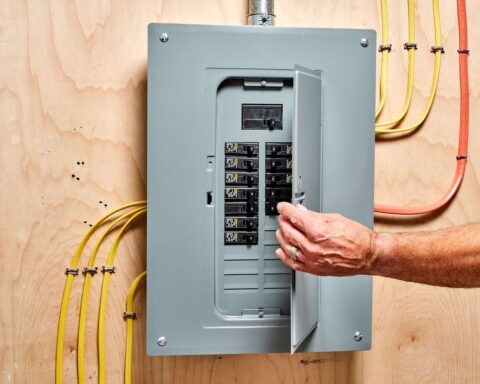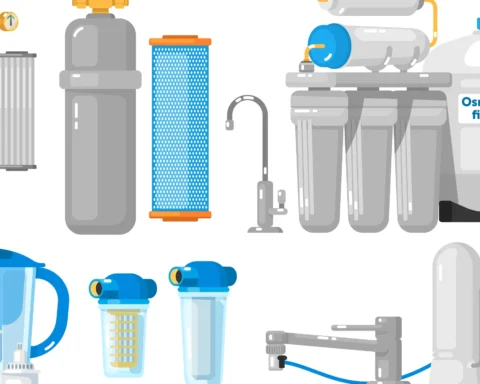Electricity is the lifeblood of modern homes, powering everything from lights and appliances to heating and cooling systems. Understanding residential electric service is essential for homeowners to ensure their homes are safely and efficiently powered.
In this comprehensive guide, we’ll explore the basics of residential electric service, including how it works, common components, safety considerations, and tips for optimizing energy usage.
The Basics of Residential Electric Service
Residential electric service refers to the provision of electrical power to homes for lighting, heating, cooling, and other household needs. It involves the delivery of electricity from a utility company’s power grid to individual homes through a complex network of wires, transformers, meters, and distribution panels.
How It Works
Electricity is generated at power plants, where various energy sources such as coal, natural gas, nuclear, hydroelectric, and renewable sources are used to produce electrical energy. This electricity is then transmitted over long distances via high-voltage transmission lines to substations, where the voltage is reduced for distribution to residential neighborhoods.
From the substations, electricity travels through distribution lines to individual homes, where it enters through service entrance conductors and is distributed throughout the house via a series of electrical circuits. Each circuit is protected by circuit breakers or fuses to prevent overloads and electrical hazards.
Components of Residential Electric Service
Understanding the components of residential electric service is essential for homeowners to ensure the safe and efficient operation of their electrical systems.
Service Entrance
The service entrance is the point where electricity enters the home from the utility company’s power grid. It typically consists of overhead or underground service entrance conductors, a weatherhead or meter base, and a service entrance panel or load center.
Meter
The electric meter measures the amount of electricity consumed by the home and is used by the utility company to calculate the homeowner’s electric bill. Meters may be analog or digital and are usually located on the exterior of the home near the service entrance.
Distribution Panel
The distribution panel, also known as the breaker box or fuse box, is the central hub of the home’s electrical system. It contains circuit breakers or fuses that control the flow of electricity to individual circuits throughout the house. The distribution panel should be properly labeled to indicate which breakers or fuses control each circuit.
Safety Considerations
Safety is paramount when it comes to residential electric service. Failure to follow proper safety practices can result in electrical shocks, fires, and other hazards. Here are some important safety considerations for homeowners:
Electrical Inspections
Regular electrical inspections by qualified electricians are essential to ensure the safety and code compliance of the home’s electrical system. Inspections should be performed before purchasing a new home, after major renovations, and periodically throughout the life of the home.
Overload Protection
Circuit breakers or fuses should be properly sized to protect electrical circuits from overloads and short circuits. If a circuit repeatedly trips or a fuse blows, it may indicate an overload or other electrical problem that should be addressed promptly.
Ground Fault Protection
Ground fault circuit interrupters (GFCIs) and arc fault circuit interrupters (AFCIs) should be installed in areas where water is present (e.g., kitchens, bathrooms, outdoor outlets) and in bedrooms to protect against electrical shocks and fires caused by ground faults and arc faults.
Optimizing Energy Usage
Optimizing energy usage not only helps reduce electricity bills but also benefits the environment by conserving energy and reducing greenhouse gas emissions. Here are some tips for homeowners to optimize energy usage:
Energy-Efficient Appliances
Invest in energy-efficient appliances that carry the Energy Star label, which indicates that they meet or exceed the strict energy efficiency guidelines set by the U.S. Environmental Protection Agency (EPA). Energy-efficient appliances use less electricity, saving money on energy bills over time.
LED Lighting
Replace traditional incandescent and fluorescent light bulbs with energy-efficient LED bulbs, which use significantly less energy and last much longer. LED bulbs come in a variety of shapes, sizes, and colors and are available for both indoor and outdoor lighting applications.
Programmable Thermostats
Install programmable thermostats to control heating and cooling systems more efficiently. Programmable thermostats allow homeowners to set different temperature settings for different times of the day, reducing energy consumption when heating or cooling is not needed (e.g., when the home is unoccupied or during sleeping hours).
Conclusion
Residential electric service is essential for powering modern homes and is comprised of various components, including service entrances, meters, distribution panels, and circuits.
Understanding how residential electric service works, following proper safety practices, and optimizing energy usage are crucial for homeowners to ensure the safe, efficient, and cost-effective operation of their electrical systems. By following the tips outlined in this guide, homeowners can enjoy the benefits of reliable electricity while minimizing energy consumption and reducing their environmental impact.
Stay in touch to get more updates & news on essentialtribune !








